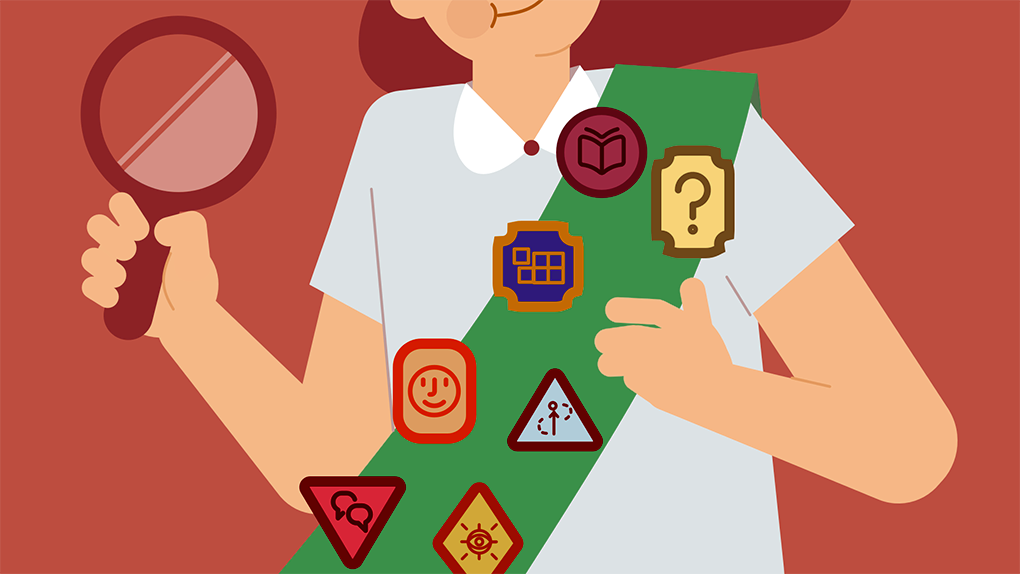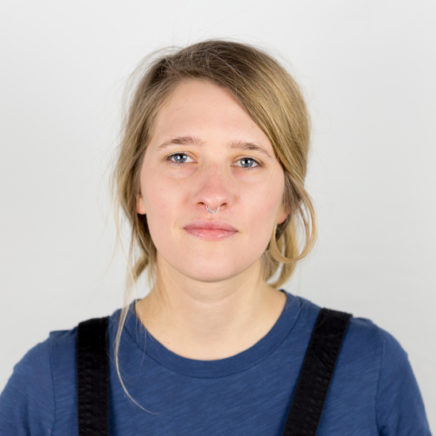
The field of user experience design is quickly growing—so much so that traditional modes of education haven’t quite caught up. It’s rare to find an undergraduate degree or emphasis in user-centered design. More often, UXers begin a career in a completely different field before finding their way to UX design. But the reality is that those other fields and other skills build successful, more well-rounded UX designers by teaching that UX skills can come from a variety of places.
At Fuzzy Math alone, you can find an unconventional and diverse group of undergraduate degrees, including computer science, theology, philosophy, journalism, psychology, anthropology, fine arts, graphic design, mechanical engineering, chemical engineering, biology, education, and (yes) UX design. That’s just naming a few.
Believe it or not, these diverse backgrounds and fields of study teach UX skills that we use every single day in design and in consulting.
UX skills go beyond the hard skills.
There are, of course, hard and tactical UX skills that designers must master—skills like understanding design foundations, strategy, user research and interviewing, and how to design a wireframe. However, empathy and good communication skills are two of the most important “soft” UX skills that good UX designers possess.
We often learn soft skills from unexpected places, from undergraduate degrees to hobbies to first jobs. Here are 9 crucial UX skills and the unexpected places that Fuzzy Mathers learned them.

1. Curiosity
UX designers need to have a healthy curiosity and an eagerness to learn more. Not only for user experience design, but for consulting as well. UX consultants are often thrown into the deep end of a new industry and need to be able to orient themselves to brand new fields at the drop of a hat. Being curious about the new subject matter and its inner workings helps build a robust understanding that helps us craft the best solutions to the problem at hand.
Liberal Arts School

Having a well-rounded background of knowledge has been super helpful for my job (I went to a liberal arts college for a reason). I think my education and my general natural curiosity have helped me really try to understand the “whys” and “hows” and “what ifs” that are part of the design process.
The ability to be comfortable with the idea of not knowing the answer is another crucial UX skill. It requires letting go of ego, something that’s often hard for new UX designers. However, the most successful designers understand that we don’t know the answers yet—after all, that’s why we’re doing UX research in the first place. It’s not our job to know the answer right off the bat, but it is our job to find the answer through research.
2. Empathy
Empathy is the heart of UX design. The ability to put yourself in another person’s shoes, to understand their goals, desires, and pain points is essential in designing good software from a user-centered approach.
Psychology

I think taking various psych classes has helped me step outside my own understanding and experiences and try to see things from other people’s perspectives because we all have had such different life experiences that have shaped us. In general in life, I try to gauge people’s behaviors as to why people are saying or doing the things they do so I can reflect on my own behaviors and how to approach people better, especially in tense or uncomfortable situations. I think this lens has helped me in a consultancy sense to better read a room as well as influencing the approach I take to communicating with clients. Life is hard. We all have stressors inside and outside our work life. We all also want respect and to be heard. Sometimes people just need a snack. You never know. I try to keep those things in mind when people are maybe a bit tense or frustrated in work scenarios.
3. Flexibility
Flexibility and teamwork are both critical UX skills. The ability to shift to new requirements, new ideas, and new environments requires designers to put their egos aside, explore new ideas, and let go of old ones.
Rowing

Rowing has helped me be a better and more flexible team player. When you are in a boat of 8 people, you all have your role and depending on who is in the boat with you your role may change. The ride may be easier or harder depending on a lot of factors. There are a lot of variables to rowing – strength, skill, boat, your coach, the wind and water that day, your headspace that day – but you are still expected to do your best in any type of situation.
4. Knowing the value of an efficient and well thought out process.
Enterprise software is, by necessity, often both data-heavy and process-heavy. Designing efficient, usable enterprise software requires UX designers to understand the process, understand users’ needs, and make strategic suggestions.
Working at Starbucks

If you really want to go back in time, I’d say that my college job as a Starbucks barista—slinging coffee and lattes to overstressed suburban moms—taught me the value of an efficient and well thought out process. So much of what we do as designers is about designing a process, and I see a lot of similarities between what I do now and what I was doing behind the counter trying to make drinks as efficiently as possible.
5. Asking questions and digging deeper than the surface
The initial UX research process often includes some form of user interviews. By talking to users first-hand, designers learn directly from the user about goals, pain points, and mental models that are necessary to drive effective design decisions.
Journalism

My marketing and journalism background really taught me how to ask questions and dig deeper than the surface layer to uncover insights. We did a lot of market research in school, and I wrote a lot for the college newspaper so that’s where I learned the art of interviewing someone.

I borrow continuously from the interviewing skills and “what does it actually mean” comprehension learned in my journalism education.
6. Storytelling
Explaining the processes and ideas behind your designs in an effective way requires strong communication skills. Even more important is storytelling—the ability to explain what your data and research insights mean for your client.
Journalism
At Fuzzy Math, we have a number of UX designers that come from a journalism background. Besides teaching interview skills, journalism gives designers the skills they need to translate interviews and data into a compelling story.

If you want to be a good UXer, you need to be a good storyteller.
7. Observation
Having strong observation skills allows designers to spot emerging patterns. In addition, observing users is a key UX research strategy. By observing users in context, designers can identify more obstacles and better understand the entire ecosystem of tools, processes, and user goals.
Anthropology

I’ve found that I actually use a fair amount of my anthropology background working as a UX designer. Ethnographic research, learning how to observe people and draw inferences from watching them do what they do, was all something that I learned about in school, without even knowing what UX was or that I would one day be a UX designer.
8. Understanding complex systems
Fuzzy Math specializes in tackling complex enterprise tools with large amounts of data. Designers need to have the ability to quickly grasp and understand complex systems without taking their eyes off the end goal: helping the user meet their goals efficiently and successfully.
Engineering/STEM
Philip Miller and Mia Frasca credit their undergraduate studies in engineering with giving them the skills to mentally grapple with complex systems and track many moving parts in order to successfully build whatever it is that’s in front of them. Engineers constantly break things down into individual pieces (whether that’s mentally or physically), all the while still knowing how they fit back together into something cohesive. Engineers also learn to keep track of the number of assumptions they’re making at each step of the process, just as UX designers must keep clients’ assumptions in mind during research.
9. Problem Solving
Problem solving requires designers to identify the problem, ideate solutions, and test and iterate. The UX design process incorporates each of those steps, and requires finding creative solutions to a variety of problems and pain points.
Theology

Theology is about problem-solving (and perhaps arguing) things that cannot be proven or disproven. You must form a deep understanding of the problem, do your research/reading, formulate a strong argument, and then defend it. There is a clear overlap between that and how we problem-solve and present our work in a user-centered design field. Basically, I learned to critically think about really hard problems during my undergrad program — and I use those skills every single day with clients and at Fuzzy Math.
Engineering/STEM
Engineering and other STEM fields solve complex problems, build solutions, test, and iterate in order to find the best fix for the problem at hand. Philip Miller and Mia Frasca note that it’s the same for UX design. You’re just solving a different kind of problem in each field. Engineers deal with the “math”—they’re more formulaic, dealing with large data sets and complex mechanics. UX designers are the “fuzzy”—answering human questions and talking to real users to solve those similar complex problems. At the end of the day, engineers and UX designers are learning and following very similar processes.
•••
One of the most exciting things about working in UX design is that our designers bring their own experiences, backgrounds, and interests to the table. And it’s that difference in perspective that makes us good at what we do.
